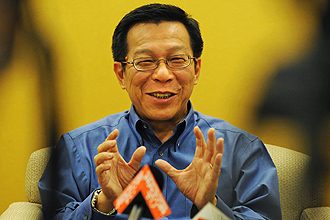<TABLE border=0 cellSpacing=0 cellPadding=0 width="100%"><TBODY><TR>Structural changes needed
</TR><!-- headline one : end --><!-- show image if available --></TBODY></TABLE>
<!-- START OF : div id="storytext"--><!-- more than 4 paragraphs -->RECENT reports suggest that property prices are now about 19 times the average annual household income.
Can an average Singapore household afford even the low- to mid-end private condominium with the current going rates of $800 to $1,200 per sq ft? Based on a typical household size of 3.5 persons and median household income of $5,500, a four- to five-room apartment of say 1,200 sq ft would cost around $960,000 to $1.44 million, or an average of $1.2 million.
That would work out to a ratio of 19 times the median annual household income. Even if we were to use $8,000 as the median monthly household income, which is the salary limit which bars one from buying an HDB flat, the ratio is about 12.5 times.
However, if we were to use only 35 per cent of one's income to service a housing mortgage, which is the recommended percentage under prudent financial planning, then the ratio becomes 52 times and 36 times respectively, assuming 100 per cent mortgage financing and zero interest. Is this sustainable?
Structural changes to our property sector are required and I have four suggestions:
The Housing Board should abolish the $8,000 gross monthly household income ceiling so that the sandwiched class need not be forced into the private property market;
The HDB should relax all rules governing ownership and transferability such that the public housing market operates in the same way as the private property market, but HDB continues to sell subsidised flats to first-time Singaporean applicants;
The Inland Revenue Authority of Singapore (Iras) should introduce a property gains tax which taxes only profits in a progressive manner that will impose higher taxes for higher profits. Alternatively, the Iras can tax property gains except for owner-occupied properties; and
The Urban Redevelopment Authority (URA) should release land for sales continuously based on projections of economic activities and the population census, so that property developers can plan with certainty about supply. The URA should also mandate developers who tender for a project to develop it within a certain period of time.
Ee Teck Siew
</TR><!-- headline one : end --><!-- show image if available --></TBODY></TABLE>
<!-- START OF : div id="storytext"--><!-- more than 4 paragraphs -->RECENT reports suggest that property prices are now about 19 times the average annual household income.
Can an average Singapore household afford even the low- to mid-end private condominium with the current going rates of $800 to $1,200 per sq ft? Based on a typical household size of 3.5 persons and median household income of $5,500, a four- to five-room apartment of say 1,200 sq ft would cost around $960,000 to $1.44 million, or an average of $1.2 million.
That would work out to a ratio of 19 times the median annual household income. Even if we were to use $8,000 as the median monthly household income, which is the salary limit which bars one from buying an HDB flat, the ratio is about 12.5 times.
However, if we were to use only 35 per cent of one's income to service a housing mortgage, which is the recommended percentage under prudent financial planning, then the ratio becomes 52 times and 36 times respectively, assuming 100 per cent mortgage financing and zero interest. Is this sustainable?
Structural changes to our property sector are required and I have four suggestions:
The Housing Board should abolish the $8,000 gross monthly household income ceiling so that the sandwiched class need not be forced into the private property market;
The HDB should relax all rules governing ownership and transferability such that the public housing market operates in the same way as the private property market, but HDB continues to sell subsidised flats to first-time Singaporean applicants;
The Inland Revenue Authority of Singapore (Iras) should introduce a property gains tax which taxes only profits in a progressive manner that will impose higher taxes for higher profits. Alternatively, the Iras can tax property gains except for owner-occupied properties; and
The Urban Redevelopment Authority (URA) should release land for sales continuously based on projections of economic activities and the population census, so that property developers can plan with certainty about supply. The URA should also mandate developers who tender for a project to develop it within a certain period of time.
Ee Teck Siew


